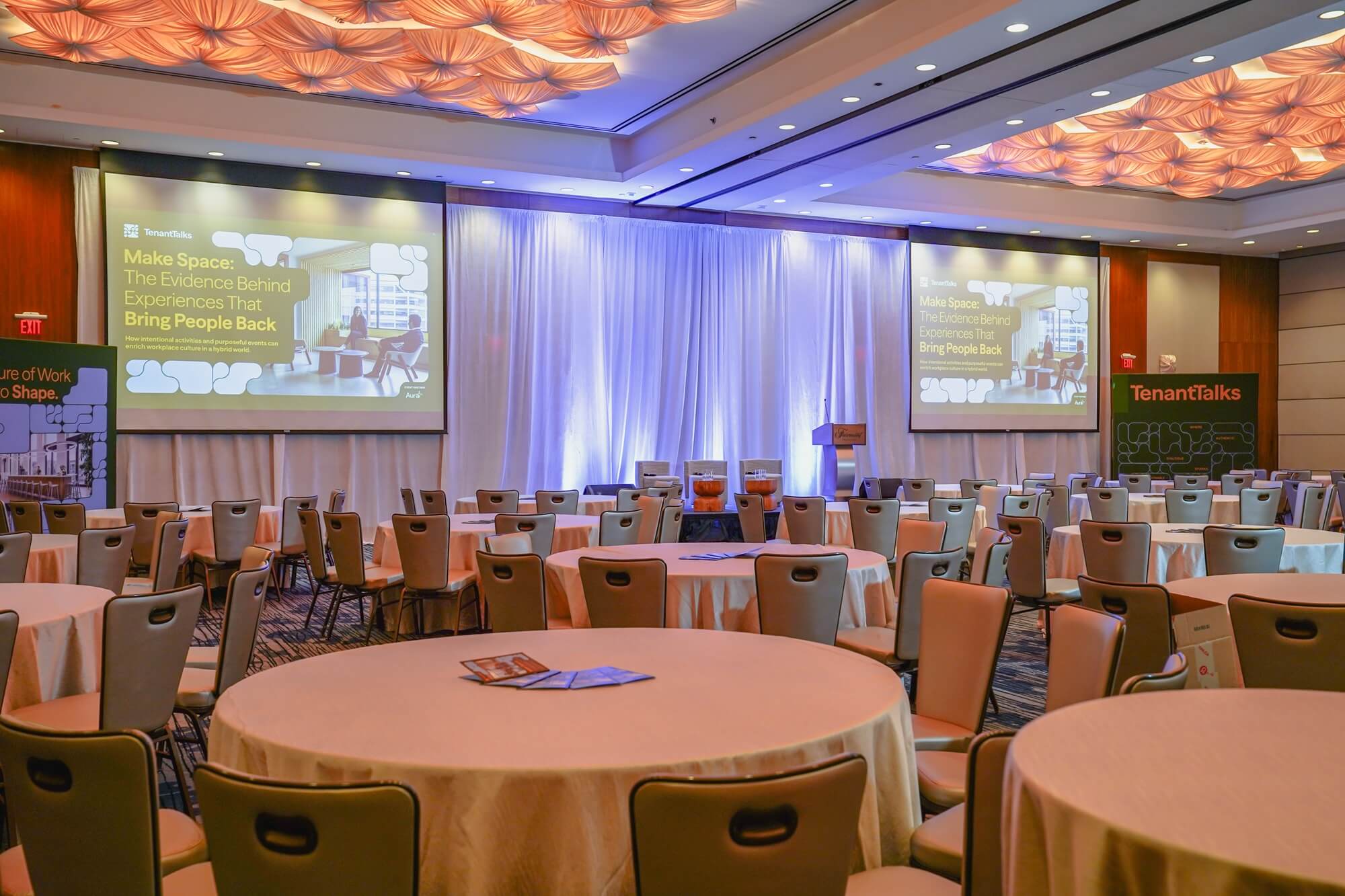Wellbeing In The Workplace
Studies have shown that the office environment affects the wellbeing of employees. Aura Office shares a unique approach to help you curate positive workplace experiences. Read more.
An office space is more than where you and your employees come to work. It’s an extension of your identity as an organization, and an extension of the culture that’s created through the relationships you build and the work that you do.
It wasn’t always this way; offices have gone through various reinventions that limited their ability to invigorate and stimulate good work ethic and positivity from employees, but 2017/18 is witnessing an invested approach to making sure the office is a place that people feel good about spending their time. It’s this style wellbeing in the workplace that makes for successful office environments.
Aura Office has painstakingly developed a penchant for looking past the standard Human Resources views of office and employee wellbeing to demonstrate that tailored environmental aspects can have a profound impact on positive or negative experiences towards the workplace experience.
Views of Nature
Offices that showcase and feature broad, bright views of greenery and nature have many enlightened effects on the workplace. Forbes tells us that a recent study found that 13% of employees report a higher level of wellbeing when they are able to work in an office with views of nature. This biophilic design concept shows that contact with nature – as well as design principles that accentuate or mimic natural materials – has been shown to directly and positively impact health, performance, and concentration, as well as reduce stress and anxiety.
Human beings are instinctively drawn to nature, and Exeter University found that the sights of greenery – whether that be from the presence of live plants in the office, or access to a window and a view of nature – boosts brainpower and improves mood in employees. They also found that productivity went up 15% when natural elements are present in the office environment.
Access to Natural Light
Further to access to views of nature, offices that provide ample access to natural light also report a boost to employee wellbeing and vitality – which can also have profound positive effects on employee satisfaction, creativity, and productivity. A study from the neuroscience program at Northwestern University in Chicago found that offices with access to windows and natural light offer up to 173% more white light which has a strong relationship with employees perception of quality of life, and sleeping patterns.
The study shows that linking the office environment to the natural human Circadian Rhythm – biological and mental signals generated in the brain by natural factors in the body – help to control the body’s chronological clock, allowing employees to get, on average, 46 more minutes of sleep per night. Interruptions to the circadian rhythm of the body due to a restriction of natural light is also linked to depression, diabetes, obesity, and seasonal affective disorder – so let that sun shine in!
Room to Breathe
On average, employees are in their office workplace for about 35 hours per week – often longer than they sleep during the business week. When this environment dictates the primary space from which people draw most of their air, offices that address issues of air quality and proper ventilation report seeing positive increases to both productivity – up 11% according to the World Green Building Council – and thermal comfort.
Improvements to oxygen levels, air quality, and ventilation systems within the office contribute to the overall health and wellness of employees by reducing the ‘sick building syndrome’ that can bring about headaches, eye irritations, dry skin, and even fatigue. The Canada Safety council notes that plants and greenery in the workplace also contribute to filtering air, producing oxygen, and eliminating carbon dioxide from the air levels in our office spaces, reducing allergens in the air, and contributing to a healthy and happy working space.
Physicality
Being active and physical is one of the strongest proponents to a healthy lifestyle, so when employees can sometimes spend as much as 75% of their day sitting down, it’s integral to encourage physicality and as little sedentary behaviour as possible. Ergonomists tell us that the negative health consequences to sitting all day can include increased blood pressure and elevated cholesterol, as well as an increased risk of developing colon, breast, and endometrial cancers. Poor blood circulation and muscle degeneration are also formidable consequences of prolonged sitting.
Successful office environments that address workplace wellbeing often provide locations within the office that allow for employee activity – both sitting and standing. Offering alternatives to constant sitting, like standing desks, collaborative spaces that embrace movement, and even a cafe or break space that encourages employees to get up, take a 5 minute walk, and get their legs moving to grab a coffee, or healthy snack are great ways to embrace ergonomically motivated movement – not just standing – at work.
Project Your Impact
Lastly, one of the greatest ways to instill some energy, vitality, and intellectual well-being within our office environments is to involve, collaborate with, and engage your colleagues. Office design and outfitting should always reflect your company culture and brand identity. Reaffirmation of a team spirit and collaborative culture within the workplace is likely to be well received by staff, in turn boosting respect, sharing, and respect at work.
Engage your employees in discussions that concern the direction, culture, and progression of the company. Offering your desire to collaborate and converse with your team inspires trust – so routinely ask your staff to ask themselves “why” they do what they do. Why does your company care about its mission? Why does your company care about its clients? These questions help to prompt answers of passion beyond a paycheck. Engaged and cooperative offices that place well-being and spirit at the forefront of their environmental culture transcribe a sense of understanding and support.


